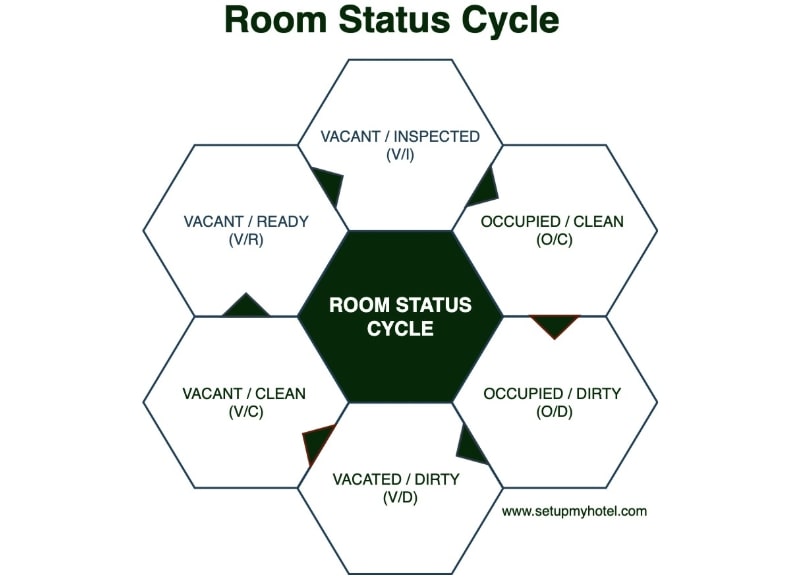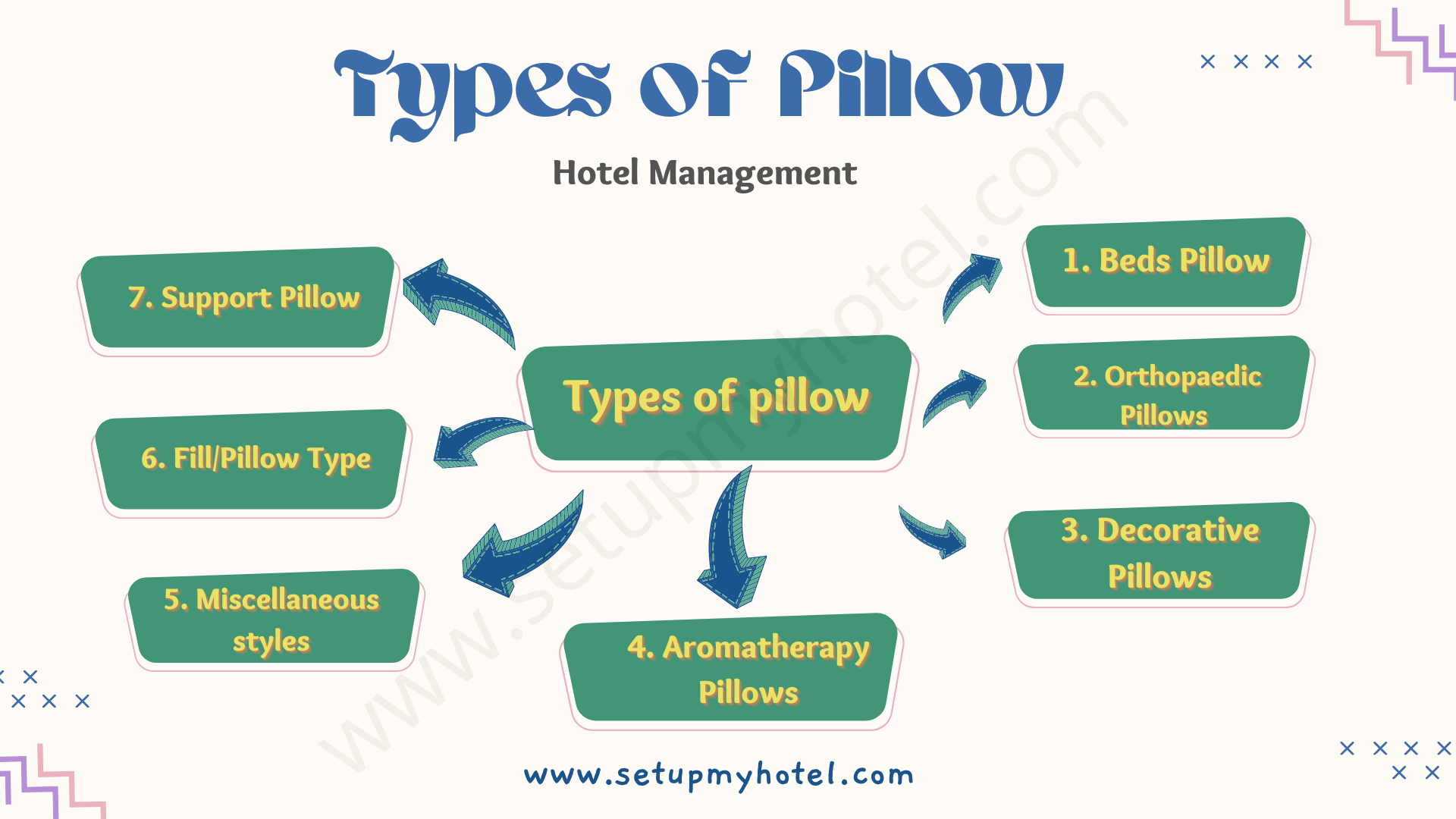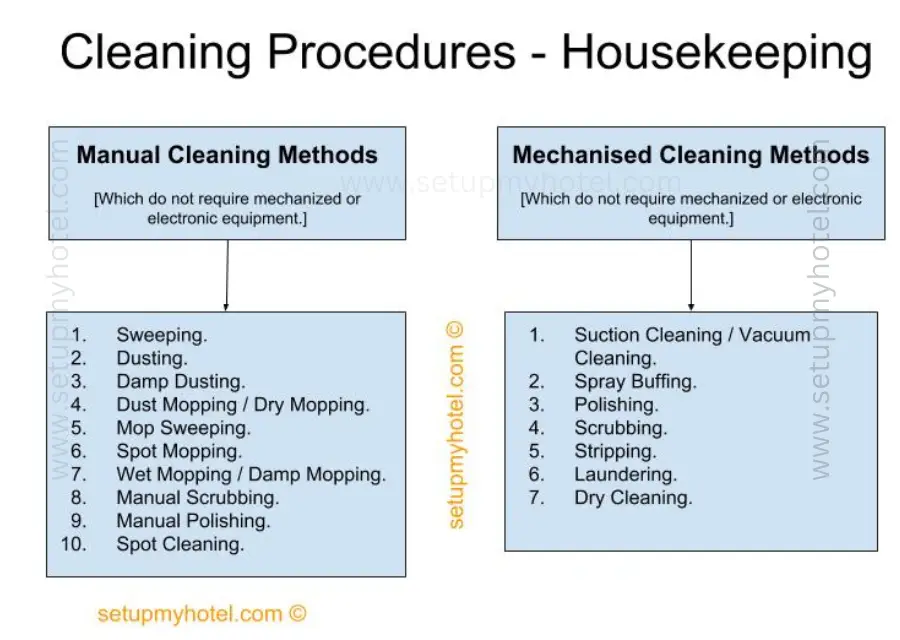Types Of Hotel In Room Jacuzzi

Different Types of Jacuzzi Found in Hotels When it comes to hotel rooms with jacuzzis, there are a variety of ...
Read more
Room Status Cycle (Diagram) In Housekeeping | Hotels

Room Status Cycle in Hotel Housekeeping The room status change is a particular order and can be thought of as ...
Read more
Room Status Codes For Housekeeping Department

List of Standard Room Status Codes Used by The Housekeeping OCC – Occupied VC – Vacant & Clean VD – Vacant & Dirty ...
Read more
Principles of Cleaning in Housekeeping Department

Basic Principles of Cleaning in Hotel Housekeeping Department The housekeeping department plays an essential role in maintaining the cleanliness and ...
Read more
Housekeeping Standards of Cleaning – Hotels | Resorts

Standards of cleaning for the Hotel Housekeeping Department To maintain the standards that keep guests coming back, the hotel housekeeping ...
Read more
23 Commonly Neglected Cleaning Areas in Hotel Guest Rooms

Commonly Neglected Cleaning Areas in Hotel Guest Rooms When it comes to hotel guest rooms, there are certain areas that ...
Read more
23 Room Types Or Types Of Room In Hotels | Resorts

Types Of Rooms in Hotels When it comes to booking a hotel room, there are many different types of rooms ...
Read more
7 Types Of Pillows Used In Hotels

Types Of Pillows Used In Hotels Hotels around the world aim to provide their guests with the best possible sleeping ...
Read more
How To Block / Allocate Rooms For Expected Arrivals

Tips for Blocking/Allocating rooms for expected arrivals One of the most important aspects of running a successful hotel is ensuring ...
Read more










